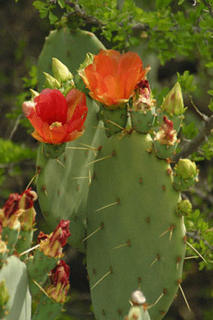
The prickly pear cactus was imported from its native South America to use as natural fencing in Australia to keep herds of cattle in check. It spread quickly and soon got out of hand. In the 1920s, the cactus moth (cactoblastis cactorium) was used extensively to stop the prickly plant from overrunning the Australian Outback. As a biological plant control, the moth was hugely successful. It was later used in other regions, including the Caribbean, to quell growth of the prickly plant.
It was such a short jump from the Caribbean to the Florida Keys for the moth, that in the late eighties, it soon migrated to the North American mainland. Scientists became increasingly alarmed at the advances the moth had made. It was imperative to stop it at a designated line of demarcation in the Florida Panhandle and Alabama; to keep the moths from heading into the Gulf coast, the Southwest, and onward into Mexico, where the cactus is vital to agriculture, horticulture and the environment.
Hurricane Katrina could have set back the methods utilized in stopping the moth from advancing. Fears have arisen that the cactus pads and moths, which consume the cacti in its caterpillar stage, have broken off from their habitat in Dauphin Island in Alabama, near Mobile, and are now scattered all around the Gulf. Katrina devastated Dauphin Island. They may be floating aimlessly toward areas they were supposed to stay away from. Currents may wash the moths ashore, where new generations may reproduce this fall. They could then move inland.
Dauphin Island was crucial in stopping the moth. It is the last barrier island where you have good access by road. There, and Santa Rosa Island near Fort Walton Beach in the Panhandle, tests were being conducted to stop them. This was also a means by the USDA Agricultural Research Service to use natural methods instead of insecticides that have proven to be ineffective.
The USDA estimates that the prickly pear industry in this country is worth $70 million annually, mostly in the Southwest where it is used mainly for foraging and landscaping.
In Mexico the fruit is consumed and usually is pickled or boiled. There, the industry is valued at up to $100 million annually, not counting what people do on their own by picking it for themselves.
Now, I'm not going to call this a potentially life threatening event or something we should lose sleep over. The sky's not falling. It's not a proven fact that this is absolutely going to happen. But, Katrina was the most horrible natural catastrophe to occur in my lifetime and I'm just trying to point out that it is going to affect our lives in ways we are not even capable of comprehending yet. The prickly pear dilemma is just one of the many small things that might impact people in silent ways you just won't read about on a daily basis. All of those small things add up.
Katrina will leave us in a pickle and I don't feel too Kosher about that.

No comments:
Post a Comment